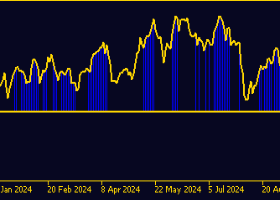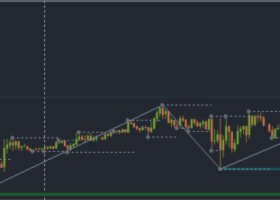
(12 March 2020)DAILY MARKET BRIEF 1:A sword cutting through the water
US stock futures sank past 4% after the Dow closed 5.86% down in New York as Donald Trump’s public address fell short of what investors were
hoping for. Trump suspended travels to Europe for the next 30 days - further hitting the transport industry, announced financial support to
those affected by the virus and promised to ‘provide capital and liquidity’ to small business. There was little detail on payroll tax cut.
Meanwhile,
the WHO declared the coronavirus a global pandemic.
As Trump said ‘this is not a financial crisis’ but it is on the verge of becoming one
of the severest economic meltdowns we have experienced over the past decades and unfortunately, the arms we have in disposition to combat a
regular financial crisis doesn’t seem to work in this particular situation. This is because proposed financial measures aim boosting
activity at a time companies slow down operations to prevent further contagion. In this sense, we are not sure that companies could or would
benefit fully from the massive monetary measures deployed by central banks in panic. Cheap lending is clearly not the answer to the specific
problem we are facing today. Massive rate cuts have the effect of a sword cutting through the water. It appears that pulling out the heavy
artillery doesn’t do much, other than narrowing central banks’ capacity to deal with the crisis when the time is right. This is why fiscal
packages make more sense to contain panic in the short term, but actions on that end remain weak to satisfy investors.
Equities in Sydney
tanked more than 7%, as Nikkei and Hang Seng slumped 4.41% and 3.38% respectively. WTI dived past 5% to $30 a barrel.
The negative
correlation between gold and risk assets broke again. Gold provided no protection to investors as the price of an ounce slipped to $1630 in
the overnight trading session.
The FTSE 100 is poised for a deep dive at the open, the energy-heavy index could test the 5500p on the
downside, although the UK was doped with a powerful cocktail of monetary and fiscal stimulus on Wednesday. The pound fell, after the Bank of
England (BoE) cut the interest rates by 50-basis-point cut and announced additional stimulus measures to incentivize banks to lend more.
The announcement of a 30-billion-pound fiscal package to combat the coronavirus shock on the economy bettered the mood in sterling by
improving growth and spending prospects. But Cable tested the 1.28 support twice; the third one could be a success and encourage a further
fall toward the 200-day moving average (1.2720). On a side note, investors had little hint on Johnson’s plans to assure a smooth Brexit, as
the coronavirus measures took the center stage at yesterday’s statement.
By Ipek Ozkardeskaya


